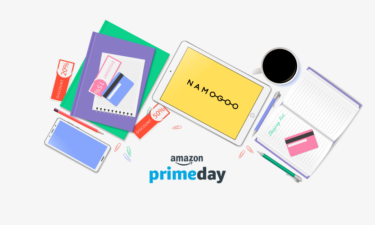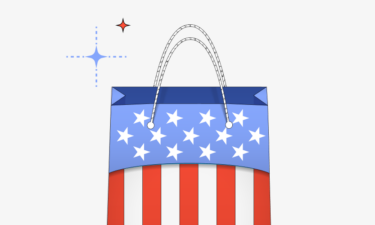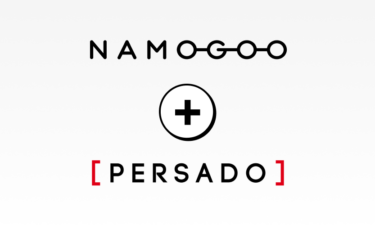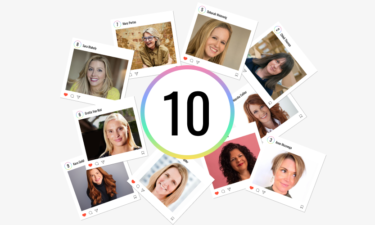Bonus Material: Promotions Insight Survey 2021: Shoppers Edition
eCommerce personalization is one of the most effective conversion drivers for Shopify stores.
Spanning beyond segmentation, tailoring the customer experience for each individual user is a top priority for some of the top eCommerce companies in the world.
And that’s because it drives revenue, customer lifetime value, and loyalty. In fact, 61% of online shoppers surveyed stated that they’re more likely to buy from a personalized offer.
While personalization can seem daunting, there are a host of strategies and apps that make it simple for Shopify sellers.
We put together this guide about personalized marketing on your Shopify store to help you start customizing the customer experience today.
The Benefits of Personalizing the Customer Experience
5 Ways Shopify Stores Can Drive Conversions With Personalization
Start Personalizing the Customer Experience Today
The Benefits of Personalizing the Customer Experience
Personalized marketing is a strategy where brands create a tailored experience for their audience based on the information they gather about who an individual shopper is, including their demographics, psychographics, behavioral data, and customer intent signals.
While plenty of companies personalize the onsite customer experience, it’s particularly effective for eCommerce brands. Here’s why:
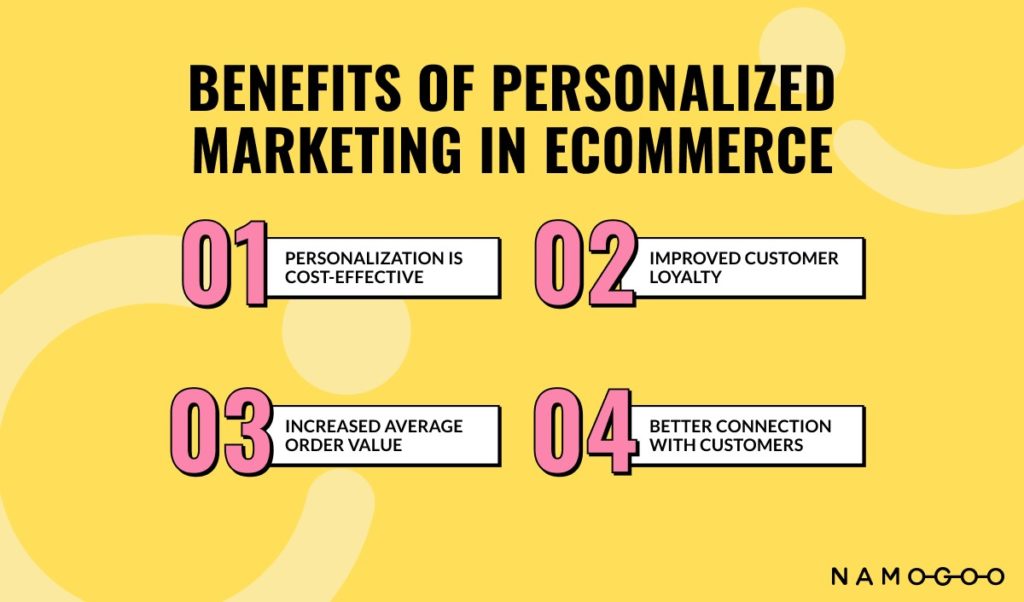
#1. Personalization is Cost-Effective
Personalization is an effective way of driving revenue for Shopify sellers.
It’s also cost-effective. Recent data shows that personalization can reduce customer acquisition costs by as much as 50% and increase marketing spend efficiency by 30%[*].
So while you might spend a bit more launching a personalized campaign, your budget will go further, making this an economical part of your marketing strategy.
But personalization is not a silver-bullet strategy only used for your social media advertising campaigns; it should be part of an omnichannel marketing strategy that draws customers in and keeps them coming back for more.
#2. Improved Customer Loyalty
It costs less to keep the customers you have than to acquire new customers, and personalization helps brands do just that.
Personalizing the customer experience provides your shoppers with a personal connection, which was long a part of the traditional, brick-and-mortar shopping experience.
eCommerce shoppers have far more options today, so a personal touch helps brands to stand out.
Consumers are becoming accustomed to the individualized, tailored customer experience they receive on social media and Amazon.
Delivering exclusive campaigns and personally suggested products gives customers the personal experience they crave and can drive loyalty.
#3. Increased Average Order Value
Personalized offers, campaigns, and recommendations provide targeted promotions and products to customers based on their past browsing behavior and other personal data.
This makes the offers far more relevant, increasing sales by offering customers items they are most likely to be interested in.
In fact, nearly half of all shoppers report making an impulse purchase after receiving a personalized recommendation from a brand[*].
More than 20% of shoppers say they spent more than $50 on a single purchase from a personalized offer, and 7% spend more than $100.
Even more impressive, 85% of impulse shoppers were satisfied with their purchase, with just 5 % of shoppers returning their items.
This means in addition to increasing eCommerce sales as a whole, personalization increases customer lifetime value and average order value.
#4. Better Connection with Customers
Today’s eCommerce experience is not just about transactions; it’s about relationships.
With so many options and competitors, especially online, you can’t win just by creating products and launching your store. To be competitive, eCommerce companies need to humanize their brands and foster relationships with their customers.
Personalized marketing shows customers you care about them individually. That connection can help you build a stronger relationship for months and years to come.
5 Ways Shopify Stores Can Drive Conversions With Personalization
Personalization makes the buying experience frictionless, and limits the paradox of choice so consumers can complete their orders and get back to their lives.
Many points in the customer journey offer potential for personalization, including videos, landing pages, homepages, ads, emails, push notifications, product and service recommendations, and transactional messages, such as receipts and shipping notifications.
So how does personalization look in action? Let’s look at a few examples and explore why they work.
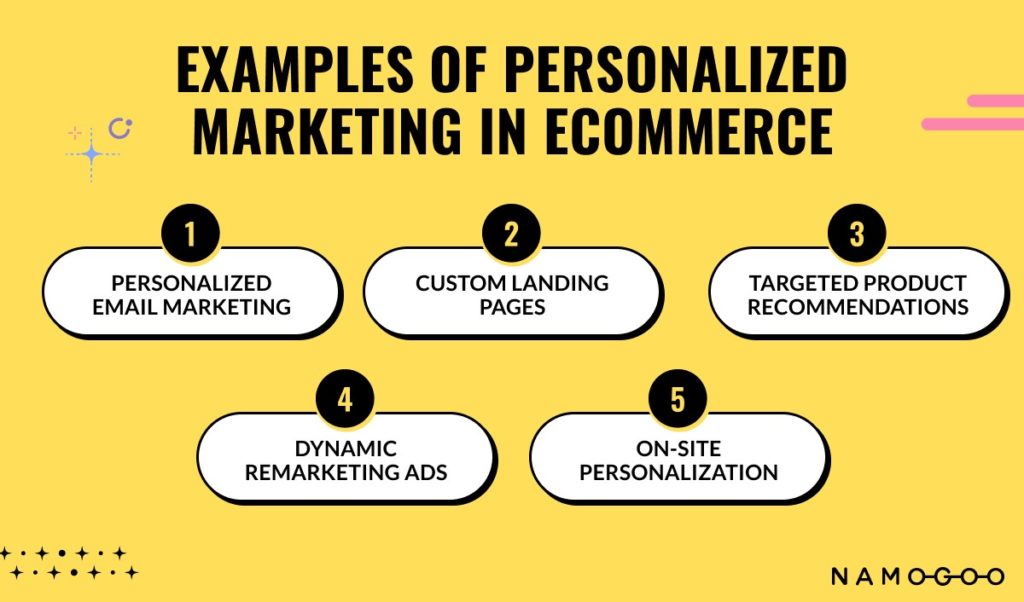
#1. Personalize Your Offers Based on Customer Intent
One of the most effective ways to convert website visitors into loyal customers is by tailoring the customer experience, including the promotions offered, to each individual customer based on their behaviors and customer intent.
After all, some customer segments are more likely to convert when incentivized with promotion, whereas others have high intent to purchase and don’t need an incentive to complete their order.
Treating all of your Shopify store visitors the same will lead to:
- Lost revenue as you offer discounts to those who would have converted without them.
- Eroded margins because of generic offers despite the customer acquisition channel.
- Damaged brand perception as you train your customers to expect a discount, or come to view you as a “discount brand”.
So personalizing the promotions and discounts you offer is a powerful strategy that impacts more than just conversion rate:
- Improved conversion rates
- Increased average order value
- Reduced cart abandonment
- Protected brand perception
- Improved margins.
Presenting promotions only to those who require one to convert not only drives conversion rates and revenue but also protects your margins by reducing the average discount rate.
This Namogoo customer set their maximum discount in Intent-Based Promotions at 15% but averaged only 5.2% for the week.
This helped them save $17,000+ in margin across 117 orders for the week.
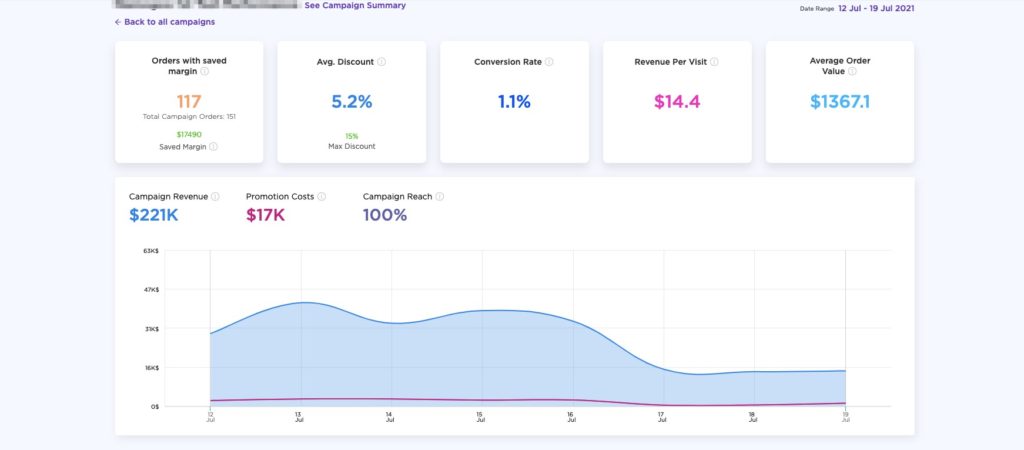
How to Do It
Recent advancements in machine learning and AI have empowered even smaller eCommerce stores to engage in intent-based marketing.
While it would be nearly impossible to build this capability for most Shopify stores, you can use platforms that integrate seamlessly with Shopify to achieve this level of customization.
Powerful tools like Intent-Based Promotions help to serve a one-to-one customer experience tailored specifically to each individual visitor.
It works by calculating shoppers’ purchasing patterns and intent to determine the right offer for each specific customer during their session, based on behavioral and intent signals:

Data-driven personalization at its finest.
#2. Tailor the Customer Experience With Quizzes
The cornerstone of personalization is data.
If you aren’t able to collect data on your customers, you can’t very well personalize their experience on your site or off of it.
That’s why quizzing your audience is such an effective strategy. You can leverage quizzes on your Shopify store to:
- Collect data about your customers
- Increase onsite engagement
- Capture leads and improve conversions
- Gamify the product selection process.
For example, Warby Parker uses a quiz to segment customers and personalize their recommended products, asking questions like which material the user likes, and what shape of frame they prefer.
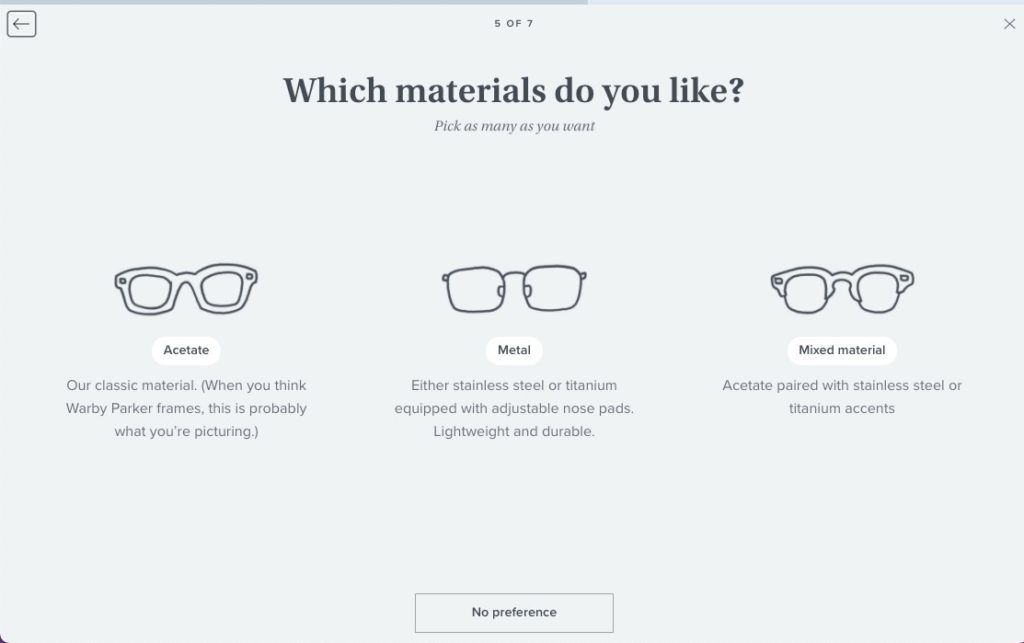
The results provide personalized product recommendations based specifically on the user’s answers to the quiz questions:
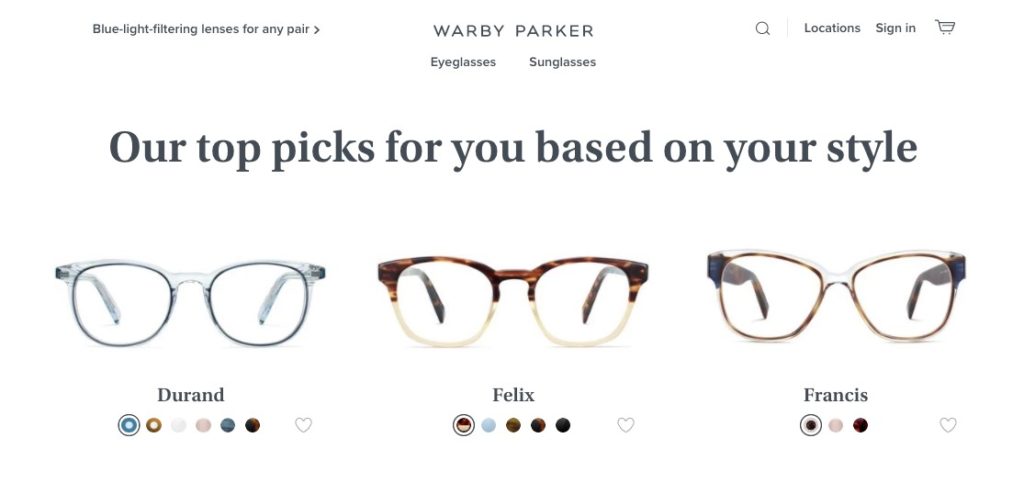
In another spin on quizzes, the eCommerce store Beardbrand uses them liberally, offering three quizzes to their visitors:
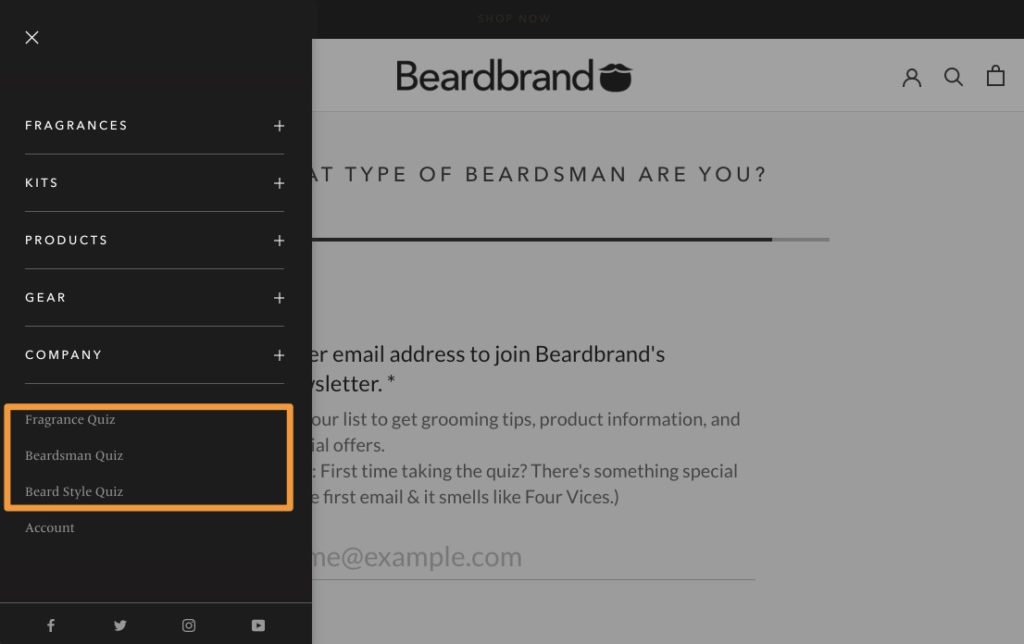
The results are email-gated, so they leverage the popularity of their quizzes as a lead capture tool to grow their email list.
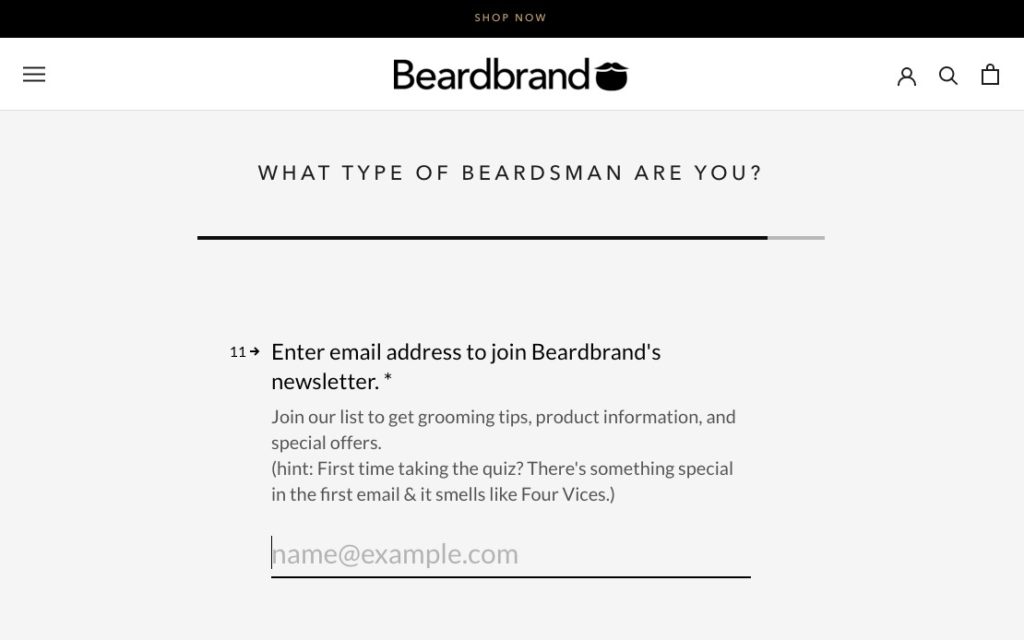
How to Do It
Implementing a quiz on your Shopify eCommerce store can be as simple or complex as you want it to be.
There are several Shopify apps (or apps that integrate with Shopify) that allow you to set up a quiz in minutes, including:
If these lack the functionality you require, you can have these custom-developed.
#3. Custom Product Recommendations
There are many reasons customers abandon their carts and browsing sessions, from a poor user experience to being surprised with unexpected fees at checkout.
But one of the most common reasons is that they either couldn’t find a product that resonated with them or selecting the best product or product mix was confusing.
The missing piece is personalization.
If your Shopify store has a lot of SKUs or if your products are in a new or unknown category, using demographic, psychographic, and behavioral data to dynamically provide personalized product recommendations can:
- Increase conversion rate
- Improve average order value
- Reduce shopping cart abandonment rate
- Provide an elevated customer experience.
Presenting products selected specifically for each customer based on their unique traits removes friction from the user experience onsite and allows the customer journey to keep moving in the right direction.
ASOS uses behavioral data to provide personalized cross-sell recommendations on the product page.
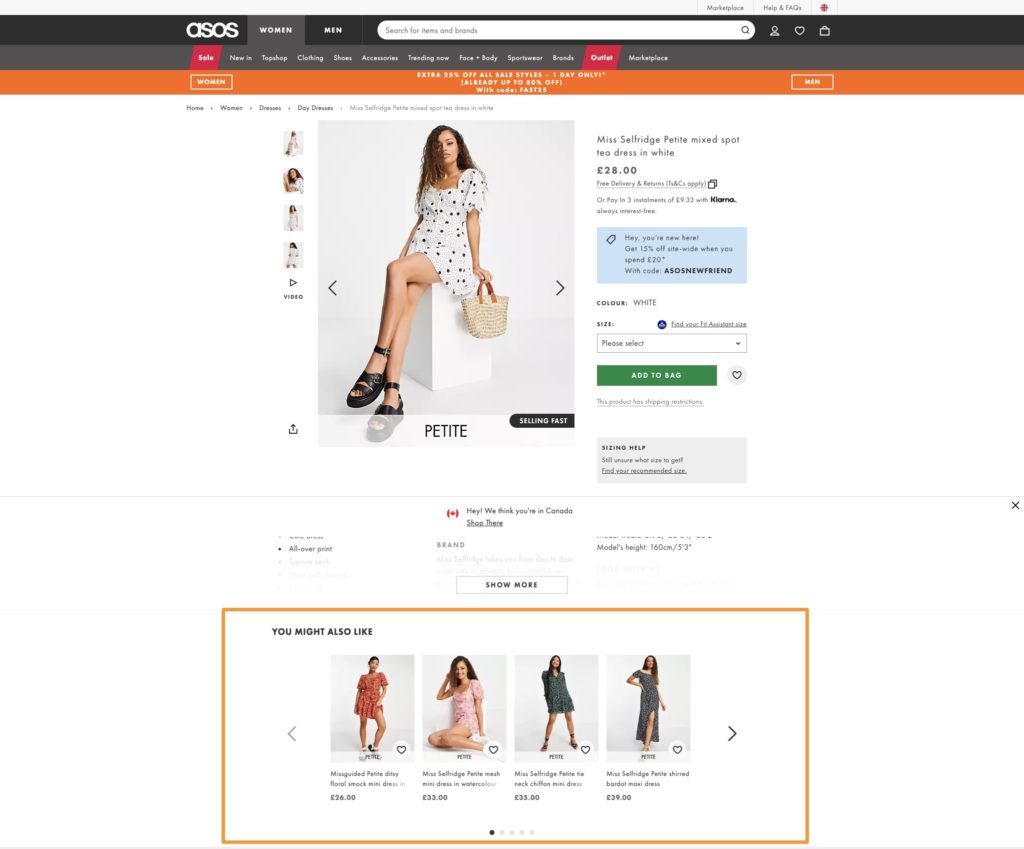
This undoubtedly increases the brand’s average order value and revenue per visitor while helping to make the user experience seamless.
Another example of Shopify sellers providing personalized product recommendations is the children’s clothing store retailer Andy & Evan. Your browsing behaviors provide data to their product recommendation app to suggest relevant products you might be interested in.

How to Do It
If you’re starting from scratch with personalization, start with suggesting custom add-on items based on the browsing patterns of your customers.
This is easy to accomplish on Shopify with a product recommendation app, such as the ones below:
- Frequently Bought Together by Code Black Belt
- Personalizer by Limespot
- Personalized Recommendations by Expert Village Media Technologies.
#4. Delight Customers With Personalized Rewards
While developing a customer base of loyal, raving fans isn’t a simple process, a good start is to personalize the customer experience by providing rewards and incentives tailored to each individual.
And Shopify sellers can do this with a basic rewards program that identifies unique characteristics of their customers.
For example, the activewear brand Outdoor Voices provides a $20 discount on a purchase of $100 or more with their personalized half-birthday offer.
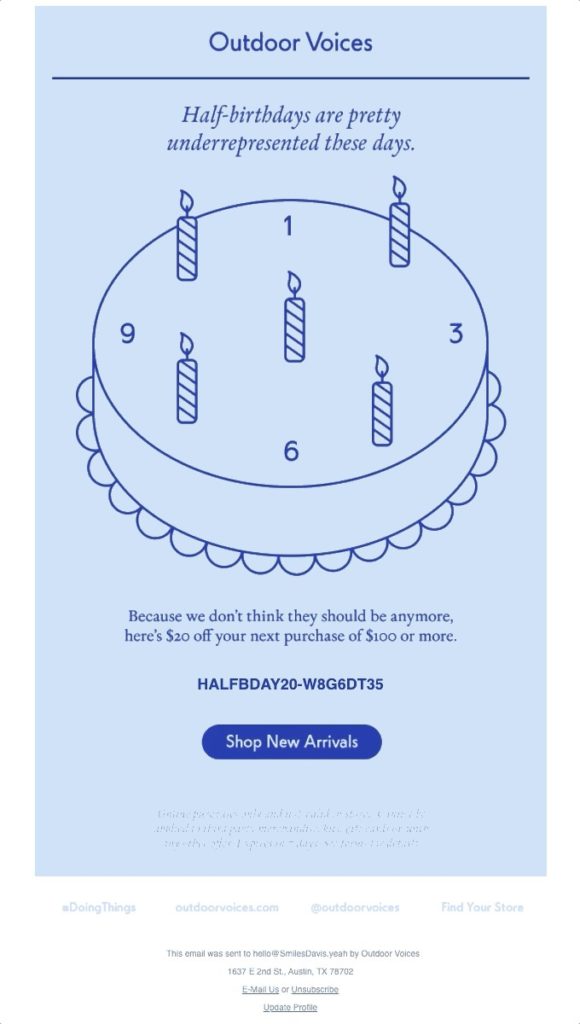
Acknowledging the accomplishments, events, and special dates in your customers’ lives can foster a personal touch that often leads to loyalty.
Loyal customers are the drivers of a strong customer lifetime value , the building block of a sustainable eCommerce company.
Bonus: by celebrating the customer’s half-birthday, they don’t have to compete with the other brands vying for their attention on the shopper’s real birthday.
How to Do It
Personalizing your loyalty program is easy with most rewards program platforms, like:
- Loyalty, Rewards & Referrals by S Loyalty
- LoyaltyLion
- Smile: Rewards & Loyalty by Smile.io
As part of the program enrollment process, collect key information from your customers such as their birth dates, anniversaries, or anything else that is relevant to your Shopify store.
Then, provide them with personalized rewards to increase customer loyalty and make your customers feel special.
#5. Drive Average Order Value with Personalized Bundles
Adding bundles to your product offerings is an excellent way to increase your average order value and improve revenue per visitor.
But you can take it a step further and enable personalization by allowing customers to build their own bundles.
Several Shopify apps allow customers to add preferred products (including those you’ve recommended to them!) to a custom kit.
This empowers the customer to take personalization into their own hands. The hair care eCommerce brand Verb uses this strategy:
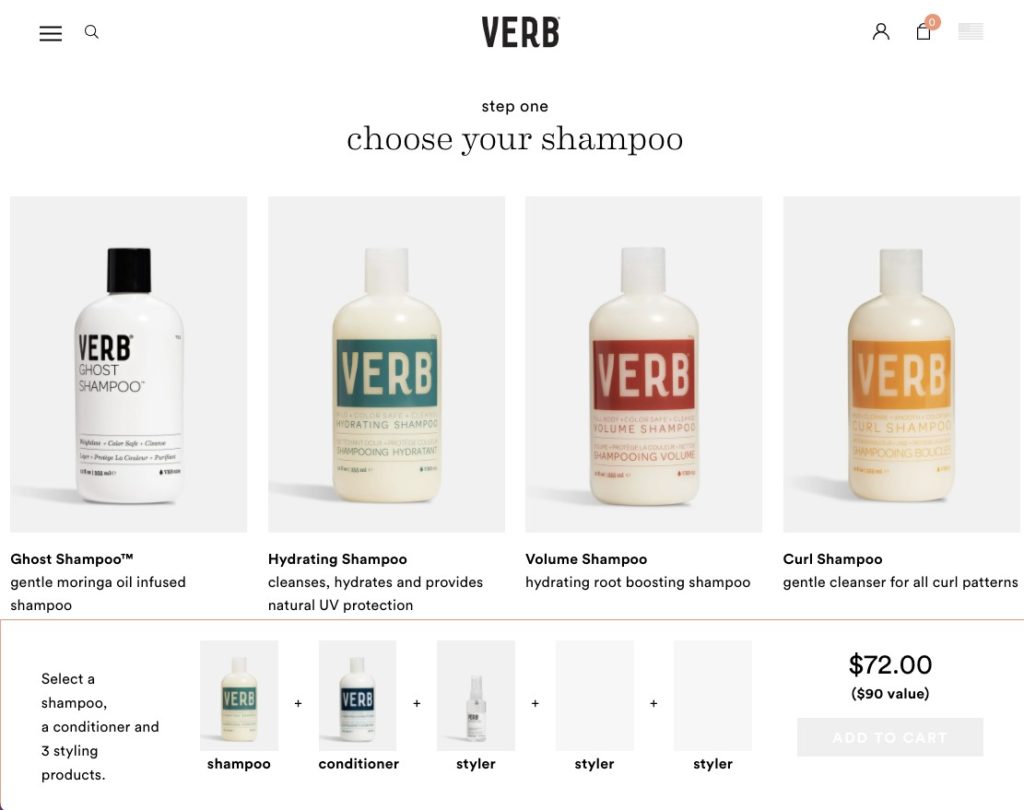
And as a bonus, they can segment customers based on the products they include in their bundle.
For example, if I were to add the Curl Shampoo to my bundle, this would communicate to Verb that I have curly hair. They could then use this intel to enable future personalization — i.e. target me with specific, relevant product offerings and content in the future.
How to Do It
Building a build-your-own-bundle capability into your eCommerce store can be technically quite complex. Custom development of these features can be costly.
So, unless you have a web development team, the easiest way to build personalized bundles into your Shopify store is to use a Shopify-integrated app, like:
- Bundle Builder by Eight
- Bundable ‑ Customizable Kits by Sovi Apps
- BYOB ‑ Build Your Own Bundle by SillyCube Technology.
These apps communicate with your inventory management system, and the discounting system in Shopify to make this process as seamless — and profitable! — as possible.
Start Personalizing the Customer Experience Today
The key to personalization is relevance.
Shopify sellers that use personal data to understand their audience and create relevant campaigns are likely to be rewarded with:
- Reduced acquisition costs
- Lower ad spend
- Higher sales
- Higher customer lifetime value.
Now it’s time to start gathering data and put it to use for your personalized eCommerce campaign.





